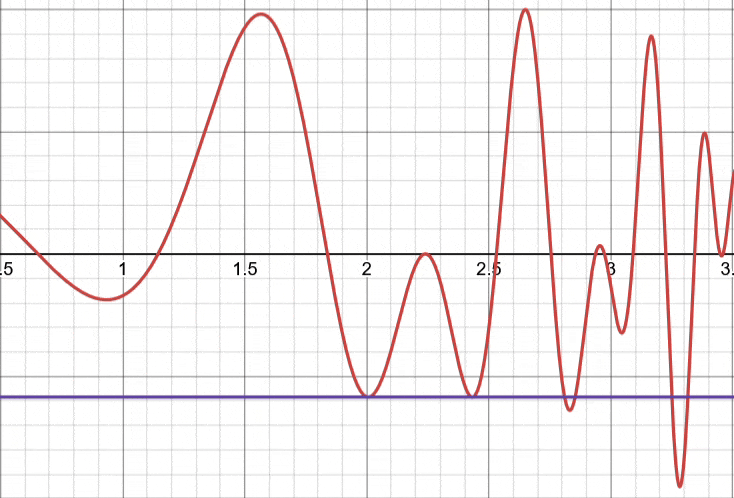The Taylor Series is an infinite power series.that can be used to approximate a function near a given point.

Definition
Taylor Series ^definition
Let be a function that is differentiable infinitely many times. Then, for a point , the Taylor series gives:
where is the -th derivative of and represents the factorial.
Taylor Series (Bivariate) ^definition-bivariate
Let be a bivariate function that is differentiable infinitely many times. Then, for a point , the Taylor series gives:
where is the -th derivative of and represents the factorial.
#todo relate to permutations and pascal triangle.
Taylor Polynomials
By Taylor’s theorem, we can construct a partial sum, which is, in fact a polynomial (because all partial sums of power series return polynomials). This polynomial is aptly named a Taylor Polynomial, with order
The first few Taylor polynomials are given by:
Bivariate
In the bivariate case, the expansions are much more longer due to the binomial-like expansion of the partial derivatives:
Remainder/Error
Taylor’s theorem also defines an remainder function .
The error is then defined to be
Bivariate Remainder
The explicit formula for the Taylor remainder in a bivariate case is (for a function near the point )
For some
For the first few Taylor polynomials:
where and
Taylor’s Theorem
Taylor's Theorem ^t1
Taylor’s theorem states that, for any function that is differentiable times, it can be well-approximated by the partial sum near some point
if, and only if the remainder approaches 0 as .
Explanation
#todo use video resource!
#todo Connection to Hessian matrix.
Examples
1: Second-order Taylor polynomial
Find the second-order Taylor polynomial for the function near the point . Hence, approximate
Solution is given by:
The formula for the second-order Taylor polynomial
We can use this explicit formula to obtain
Now, we need to find a combination that is close to the point such that . Take . Then Using the Taylor polynomial, we get:
Compare it to the actual value of the function,
2: Taylor Polynomial of a harmonic function and error-bounding. ^e2
Find the 2nd-order Taylor polynomial for near the point . Also, find an upper bound for the error if and .
Solution (since is just an extension of ):
We can start by finding
Then, is given by:
Before we compute this value, recall that the second derivative of is . Since we are inputting values and , we know all the second derivatives become 0!
So:
That is:
Using the formula for the remainder, we have:
where and .
Recall that the third derivative of is .
The error is then given by:
Since we know that is bounded by , we have
Thus:
See cauchy-schwarz inequality for an explanation of the triangle inequality used. Since we are given and , we have:
Thus, the upper bound for the error is provided above.
3: Using Taylor approximations for solving limits
Evaluate the limit:
Solution example 2, we know that as , our function can be well-approximated by the Taylor polynomial .
From
That is, we can let:
Then, our limit becomes:
By continuity theorems, we have:
Thus, we used the Taylor approximation to simplify and solve the limit.
Applications
- The first-order Taylor polynomial returns the linear approximation of a function
- returns the quadratic approximation
- returns the cubic approximation
- and so on…